Rare diseases | Overview
Diseases we study and treat
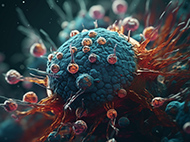
Acute COVID-19
Some children hospitalized with acute COVID-19 have been found to have genetic variants that impact their immune system. This cohort, established at Boston Children’s in 2020, is led by Drs. Adrienne Randolph and Janet Chou and has already enrolled 116 patients and their families. To date, 9 percent of patients have received a diagnostic result, leading to changes in care delivery in 86 percent, with an additional 40 percent of patients have a candidate finding that is being further researched. Learn more about acute COVID-19 at Boston Children's.
Notable publication: Immunology of SARS-CoV-2 infection in children
Investigators: Adrienne Randolph, MD, MSc, and Janet Chou, MD
Divisions: Immunology Program, Immunology, Critical Care Medicine, Anesthesiology, Critical Care and Pain Medicine, Infectious Diseases
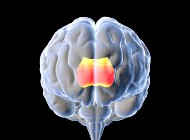
Agenesis of the Corpus Callosum
Agenesis of the Corpus Callosum is characterized by a partial or complete absence of an area of the brain that connects the two cerebral hemispheres. This cohort, which was established at Boston Children's Hospital in 2019, is led by Dr. Timothy Yu and has enrolled 24 patients and their families.
Investigator: Tim Yu, MD, PhD
Division: Genetics and Genomics
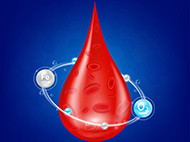
Anemias and Iron Disorders
Anemias and iron disorders are a group of disorders that affect the blood. This cohort, established at Boston Children’s in 2021, is led by Dr. Mark Fleming and has already enrolled 41 patients and their families. From his prior protocol, which had enrolled more than 1,000 individuals, he has identified a cause of congenital iron deficiency anemia (PMC3104019) as well as multiple new causes of congenital sideroblastic anemia (26491070, PMC8511274, PMC7524500, PMC6269294, PMC6269299, PMC5064715, PMC5059179, PMC4215314, PMC3943703). Learn more about anemias and iron disorders at Boston Children’s.
Investigator: Mark Fleming, MD, DPhil
Divisions: Pathology, Cancer and Blood Disorders Center
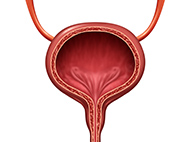
Bladder Exstrophy-Epispadias Complex
Bladder exstrophy-epispadias complex (BEEC) is a rare, complex birth defect involving the urinary, reproductive, and intestinal tracts as well as the musculoskeletal system. During a baby’s development in the womb, the abdominal wall and underlying organs sometimes don’t fuse properly, and the infant is born with the bladder and urethra inside out and exposed on the outside of the body. This cohort, established at Boston Children’s in 2023, is led by Drs. Ted Lee, Nina Mann, Richard Lee, and Joseph Borer, and has already enrolled 48 patients and their families. To date it has had a 13 percent diagnostic yield, and an additional 10 percent of patients have candidate findings that are being researched further. Learn more about BEEC.
Investigators: Ted Lee, MD, MSc, Nina Mann, MD, Richard Lee, MD, and Joseph Borer, MD
Divisions: Bladder Exstrophy Program, Urology
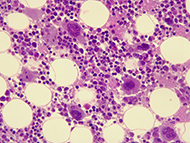
Bone Marrow Failure, Myelodysplastic Syndrome, and Leukemia Predisposition
Bone marrow failure (BMF), myelodysplastic syndrome (MDS), and leukemia predisposition are disorders that affect the blood and bone marrow, leading to reduced and insufficient production of platelets, red blood cells, or white blood cells. This cohort, established at Boston Children’s in 2022, is led by Dr. Akiko Shimamura and has already enrolled 21 patients and their families. In a recent analysis, 15 percent of patients received a clinical diagnosis, of whom 67 percent had a change in treatment plans, and an additional 15 percent of patients had candidate findings that are being further researched. Learn more about BMF, MDS, and leukemia predisposition at Boston Children’s.
Notable publication: Lessons from pediatric MDS: approaches to germline predisposition to hematologic malignancies
Investigator: Akiko Shimamura, MD, PhD
Divisions: Bone Marrow Failure and Myelodysplastic Syndrome Program, Cancer and Blood Disorders Center
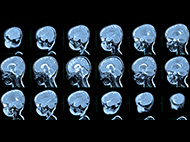
Brain Malformations
Brain malformations are a group of disorders that affect brain development or brain structure and include polymicrogyria, heterotopia, lissencephaly, microcephaly, pachygyria, focal cortical dysplasia, hemimegalencephaly, Joubert syndrome, interhemispheric cysts with agenesis of the corpus callosum, schizencephaly, Walker-Warburg syndrome, familial autism, and familial non-syndromic mental retardation. This cohort, established at Boston Children’s in 2022, is led by Drs. Christopher Walsh and Diane Shao and has so far enrolled 20 patients and their families. Already, their group has identified diagnostic variants in 18 percent of patients, including one with gray matter heterotopia. Sixty-seven percent of patients with diagnostic results have had changes in care delivery and an additional 29 percent have candidate findings that are being further researched. Learn more about brain malformations seen at Boston Children’s.
Investigators: Christopher Walsh, MD, PhD and Diane Shao, MD, PhD
Divisions: Brain Development and Genetics Clinic, Genetics and Genomics, Neurology
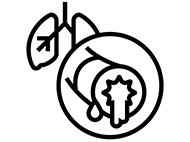
Bronchiectasis
Bronchiectasis is a long-term condition where the airways of the lungs become widened, leading to a build-up of excess mucus that can make the lungs more vulnerable to infection. The most common symptoms of bronchiectasis include: a persistent cough that usually brings up phlegm (sputum) and shortness of breath. This cohort, established at Boston Children’s in 2019, is led by Drs. Benjamin Raby, Ruobing Wang and Umakanth Katwa and has enrolled 145 patients and their families. Key outcomes include diagnostic findings in 4 percent of patients and candidate findings in 31 percent that are being researched further. Learn more about bronchiectasis at Boston Children’s.
Investigators: Benjamin Raby, MD, MPH, Ruobing Wang, MD, and Umakanth Katwa, MD
Divisions: Pulmonary Genetics Program, Pulmonary Medicine
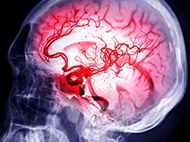
Cerebrovascular Disorders
Cerebrovascular disorders (CVDs) / vascular malformations of the brain are a group of conditions that affect the blood vessels in and around the brain and spine. They include Moyamoya angiopathy, cerebral cavernous malformations, vein of Galen malformations, arteriovenous malformation, and intracranial arteriovenous fistulas. Children with CVD face the risk of brain hemorrhage or stroke, conditions that can cause serious harm to the brain. This cohort, established at Boston Children’s in 2022, is led by Drs. Siddharth Srivastava, Edward Smith, Darren Orbach, Katie Fehnel, and Laura Lehman and has already enrolled 14 patients and their families. Key outcomes to date include a change in treatment plans for 14 percent of patients and an additional 14 percent of patients with candidate findings that are being further researched. Learn more about CVDs treated at Boston Children’s.
Investigators: Siddharth Srivastava, MD, Edward Smith MD, MBA,, Darren Orbach, MD, PhD, Katie Fehnel, MD, and Laura Lehman MD, MPH
Divisions: Stroke and Cerebrovascular Center, Cerebrovascular Surgery and Interventions Center, Neurology
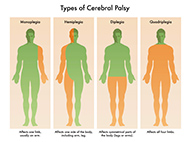
Cerebral Palsy
Cerebral palsy (CP) is the most common motor disability of childhood. CP is a group of disorders that affect muscle tone, posture, and movement as a result of injury to the developing brain. This cohort, established at Boston Children’s in 2019, is led by Dr. Siddharth Srivastava and has enrolled over 230 patients and their families. Some key outcomes include the following: 21% of patients with diagnostic variants, of whom 93% have had changes in care delivery; an additional 17% of patients with candidate findings that are being further researched; and diagnosis of patients with variants that span a diverse range of biological pathways. Learn more about CP.
Notable publications: Mendelian etiologies identified with whole exome sequencing in cerebral palsy and Molecular Diagnostic Yield of Exome Sequencing and Chromosomal Microarray in Cerebral Palsy: A Systematic Review and Meta-analysis.
Investigator: Siddharth Srivastava, MD
Divisions: Cerebral Palsy and Spasticity Center, Neurology

Childhood Hearing Loss
Childhood hearing loss can affect one or both ears and ranges from mild to profound. Even mild hearing loss can interfere with a child’s speech and language skills. This cohort, which focuses on undiagnosed hearing loss, was established at Boston Children’s in 2020 and is led by Dr. Eliot Shearer. It has enrolled more than 90 patients and their families to date. Through advanced genomic technologies, 14 percent of patients with previously negative genetic testing received diagnostic findings. Learn more about childhood hearing loss at Boston Children’s.
Notable publication: Dual-vector gene therapy restores cochlear amplification and auditory sensitivity in a mouse model of DFNB16 hearing loss.
Investigator: A. Eliot Shearer, MD, PhD
Divisions: Deaf and Hard of Hearing Program, Cochlear Implant Program, Center for Communication Enhancement, Otolaryngology and Communication Enhancement
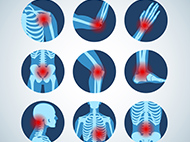
Chronic pain and insensitivity to pain
Chronic pain and insensitivity to pain can be challenging for patients and their families. This cohort, established at Boston Children’s in 2021, is led by Drs. Charles Berde and Catherine Brownstein and has already enrolled 18 patients and their families. To date, 43 percent of patients have a candidate finding that is being further researched. Learn more about chronic pain and insensitivity to pain at Boston Children’s.
Investigators: Charles Berde, MD, PhD and Catherine Brownstein, MPH, PhD
Divisions: Chronic Pain Clinic, The Manton Center for Orphan Disease Research, Genetics and Genomics, Anesthesiology, Critical Care and Pain Medicine
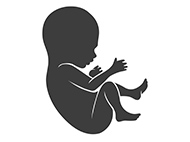
Complex Fetal Anomalies
Complex fetal anomalies include multiple congenital anomalies, findings concerning for neuromuscular disease or skeletal dysplasia, and other fetal phenotypes. This cohort, established at Boston Children’s in 2022, is led by Dr. Monica Wojcik and has already enrolled 3 patients and their families. Some key outcomes include a change in treatment plans in a third of patients and discovery of a candidate gene that is being further characterized. Learn more about complex fetal anomalies and other fetal conditions seen at Boston Children’s.
Investigator: Monica Wojcik, MD, MPH
Divisions: Maternal Fetal Care Center, The Manton Center for Orphan Disease Research, Genetics and Genomics, Newborn Medicine
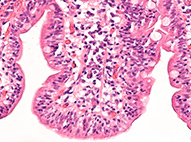
Congenital Diarrheas and Enteropathies
Congenital diarrheas and enteropathies are disorders that affect the intestine, cause severe diarrhea, and alter the ability to absorb nutrients. This cohort, established at Boston Children’s in 2019, is led by Dr. Jay Thiagarajah and has already enrolled 69 patients and their families. Some key outcomes include 37 percent of patients with diagnostic results, 14 percent of which led to changes in treatment plans, and an additional 30 percent of patients with candidate findings that are being further researched, including multiple novel, possibly disease-causing genes. Translational research leveraging the genetic findings from the cohort to investigate therapies for these disorders is underway using patient-derived cells. Learn more about congenital diarrheas and enteropathies at Boston Children’s
Notable Publication: The genetics of monogenic intestinal epithelial disorders.
Investigator: Jay Thiagarajah, MD, PhD
Divisions: Congenital Enteropathy Program, Gastroenterology, Hepatology and Nutrition
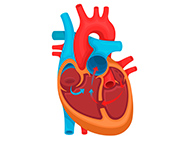
Congenital Heart Disease and Neurodevelopmental Disorders
Congenital heart disease (CHD) is a structural heart difference that develops during pregnancy. Neurodevelopmental disorders encompass a range of conditions including autism spectrum disorder (ASD) and intellectual disability (ID). Individuals with both CHD and a neurodevelopmental disorder may have an underlying genetic condition that affects both the brain and the heart. This cohort, established at Boston Children’s in 2022, is led by Drs. Maya Chopra, Amy Roberts and Lisa Prock and has already completed genetic analysis on 16 patients and their families. Some key outcomes include diagnostic findings in 6 percent of patients leading to changes in treatment plans and candidate findings in 63 percent of patients that are being further researched. Learn more about CHD and neurodevelopmental disorders at Boston Children’s.
Investigators: Maya Chopra, MBBS, FRACP, Amy Roberts, MD, and Lisa Prock, MD, MPH
Divisions: Neurobiology Program, Neurology, Rosamund Stone Zander Translational Neuroscience Center, Intellectual and Developmental Disabilities Research Center, Center for Cardiovascular Genetics, Cardiology, Developmental Medicine Center, Division of Developmental Medicine, Genetics and Genomics, Cardiac Neurodevelopmental Program
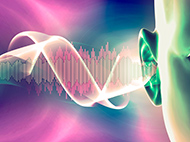
Congenital Sensorineural Hearing Loss
Congenital sensorineural hearing loss (SNHL) affects the inner ear and reduces a person’s ability to detect sound. Hearing loss can affect one or both ears and ranges from mild to profound. Even mild hearing loss can interfere with a child’s speech and language skills. This cohort, established at Boston Children’s in 2019, is led by Drs. Margaret Kenna and Eliot Shearer and has enrolled more than 400 patients and their families. Some key outcomes include definitive diagnoses for 31 percent of patients and changes to treatment plans for some patients. Non-hearing-loss-related incidental genetic findings for 5.5 percent of patients led to additional changes in treatment. Learn more about SNHL.
Notable publication: Exome Sequencing Expands the Genetic Diagnostic Spectrum for Pediatric Hearing Loss.
Investigators: Margaret Kenna, MD, MPH, FACS, FAAP, and A. Eliot Shearer, MD, PhD
Divisions: Deaf and Hard of Hearing Program, Center for Communication Enhancement, Otolaryngology and Communication Enhancement
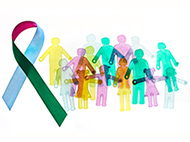
Cornelia de Lange Syndrome
Cornelia de Lange syndrome (CdLS) is a rare genetic condition that affects growth and development. Children with CdLS often have neurobehavioral features, small size, gastrointestinal problems, distinctive facial features, and may have organ or limb malformations. There are a number of conditions with related molecular defects: cohesinopathies, disorders of transcriptional regulation, and disorders of genome organization. This cohort was established at Boston Children’s in 2022 and is led by Dr. Philip Boone, with the following goals: Establish a sample and genomic repository for patients with CdLS and related disorders; identify causal mutations; and identify novel disorders related to CdLS. Dr. Boone and his team have now identified four novel disorders. Learn more about CdLS.
Notable publication: Heterozygous loss-of-function SMC3 variants are associated with variable and incompletely penetrant growth and developmental features (submitted)
Investigator: Philip Boone, MD, PhD
Divisions: Cornelia de Lange Syndrome and Related Disorders Clinic, Genetics and Genomics, Neurology
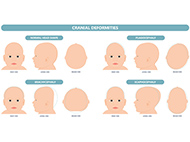
Craniofacial Anomalies
Craniofacial anomalies are deformities that affect a child’s head and facial bones. This cohort is being established at Boston Children’s Hospital in 2024 and will be led by Dr. Daniel Balkin. Learn more about craniofacial anomalies at Boston Children’s.
Investigator: Daniel Balkin, MD, PhD
Divisions: Plastic and Oral Surgery, Cleft and Craniofacial Center, Craniofacial Program

Deep Interpretation of Complex Clinical Cases
Complex clinical cases are often assessed via genetic testing at Boston Children’s Hospital. About 30% of the time, clinical genomic testing results in a genetic diagnosis. In the remainder of the cases, the diagnostic odyssey continues despite genetic testing. With time, new genes are associated with disease and new analysis can help resolve some of these cases utilizing existing genomic data. Deep analysis of this cohort is led by Dr. Wendy Chung, Physician in Chief, and supports reanalysis and reinterpretation of clinical genomic data collected at Boston Children’s Hospital for clinical purposes. The full range of bioinformatic research data interpretation tools aid in variant identification and variants are confirmed by GeneDx before any results are reported. This network involves an extensive group of 200 clinicians at Boston Children's Hospital who routinely order clinical genomic testing and is supported by the CRDC Data Science team.
Investigators: Wendy Chung, MD, PhD
Divisions: Pediatrics
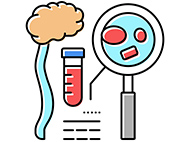
Diamond-Blackfan Anemia
Diamond-Blackfan anemia (DBA) is a rare blood disorder that occurs when the bone marrow fails to make red blood cells, which are essential for carrying oxygen from the lungs to all the other parts of the body. This cohort is being established at Boston Children’s in 2024 and will be led by Drs. Timothy Yu and Abdulrahman Aldeeri. Learn more about DBA.
Investigators: Timothy Yu, MD, PhD and Abdulrahman Aldeeri, MB, BS
Divisions: Cancer and Blood Disorders Center, Blood Disorders Center, Bone Marrow Failure and Myelodysplastic Syndrome Program
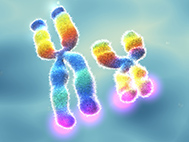
Differences of Sex Development/Severe Hypospadias
Differences of sex development/severe hypospadias are conditions that affect the development of the genital and urinary tissues. This cohort, established at Boston Children’s in 2019, is led by Drs. Joel Hirschhorn and Yee-Ming Chan and has already enrolled 34 patients and their families. To date, 15 percent of patients received a clinical diagnosis, several of which resulted in changes in treatment plans. Learn more about differences of sex development/severe hypospadias.
Notable publication: Novel variants in the stem cell niche factor WNT2B define the disease phenotype as a congenital enteropathy with ocular dysgenesis authored by Chan in collaboration with the congenital diarrheas and enteropathies cohort, describing a novel genital/gonadal phenotype.
Investigators: Joel Hirschhorn, MD, PhD, and Yee-Ming Chan, MD, PhD
Divisions: Endocrinology, Gender Multispecialty Service (GeMS), Behavioral Health, Endocrinology, Gynecology, Urology (BEING-U)
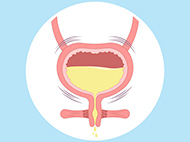
Disorders of Voiding
Disorders of voiding include abnormalities in filling, storage, and emptying of urine and can have profound effects on quality of life. In severe cases, they can lead to kidney damage. This cohort, which is being established at Boston Children’s in 2023, will be led by Drs. Nina Mann, Ted Lee, and Richard Lee. To date, it has enrolled 16 patients and their families. Learn more about Boston Children’s Voiding Improvement Program.
Investigators: Nina Mann, MD, Ted Lee, MD, MSc, and Richard Lee, MD
Divisions: Center for Healthy Elimination and Bladder Rehabilitation (CHEER), Kidney Genetics Clinic, Voiding Improvement Program (VIP), Nephrology, Urology
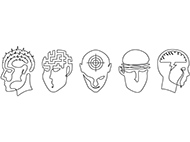
Early Onset Psychosis
Early-onset psychosis is a rare condition with poorly understood causes. Early psychosis is typically defined as symptom onset before the age 18, and very early psychosis typically describes cases with onset before age 13. This cohort, which was established at Boston Children’s in 2021, is led by Drs. David Glahn, Joseph Gonzalez-Heydrich, and Catherine Brownstein and has already enrolled 9 patients and their families. Learn more early onset psychosis research at Boston Children’s.
Notable publication: Children with early onset psychosis have an increased burden of rare GRIN2A variants.
Investigators: David Glahn, PhD, Joseph Gonzalez-Heydrich, MD, and Catherine Brownstein, MPH, PhD
Divisions: Psychiatry and Behavioral Sciences, The Manton Center for Orphan Disease Research, Genetics and Genomics, EPICenter, Tommy Fuss Center
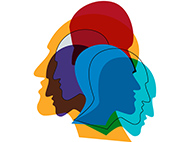
Early-Onset Severe Psychiatric Disorders
Early-onset severe psychiatric disorders such as major depression, bipolar, and psychotic spectrum illnesses are conditions that are documented before the age of 14. These illnesses usually start in later adolescence or young adulthood. They rarely present before age 14 but when they do the illness is usually more severe and carries a higher risk of long-term disability. The rate of rare highly penetrant deleterious genetic variation is higher in these patients. This cohort, established at Boston Children’s in 2019, is led by Drs. Joseph Gonzalez-Heydrich and Catherine Brownstein and has enrolled 24 patients and their families. To date, 72 percent of patients have a candidate finding identified that is being further researched. Learn more about early-onset severe psychiatric disorders such as major depression, bipolar disorder and psychotic spectrum illnesses.
Investigators: Joseph Gonzalez-Heydrich, MD and Catherine Brownstein, MPH, PhD
Divisions: Psychiatry and Behavioral Sciences, The Manton Center for Orphan Disease Research, Genetics and Genomics, Tommy Fuss Center
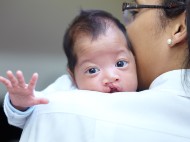
Ectodermal Dysplasia and Cleft Lip or Palate
Ectodermal Dysplasia and Cleft Lip or Palate is a rare genetic disorder characterized by abnormalities to structures that arise from the outermost layer of the embryo (skin, hair, teeth) as well as a split in the upper lip (cleft lip) and an opening in the roof of the mouth (cleft palate). This cohort, which was established at Boston Children's Hospital in 2019, is led by Dr. Ingrid Ganske. Notably, Dr. Ganske recently published “Cleft Lip and Palate in Ectodermal Dysplasia.” Learn more about Ectodermal Dysplasia and Cleft Lip or Palate at Boston Children's Hospital.
Investigator:
Ingrid Ganske, MD
Divisions:
Plastic and Oral Surgery, Cleft and Craniofacial Center, Cleft Lip and Palate Program, Craniofacial Program

Ehlers-Danlos Syndrome
Ehlers-Danlos syndrome (EDS) is a group of genetic disorders that affect the connective tissues. Most children with EDS have hypermobile joints that are prone to full or partial dislocation. This cohort, established at Boston Children’s in 2019, is led by Drs. Joel Hirschhorn and Joan Stoler, and has enrolled more than 50 patients and their families. To date, 4 percent of patients have had a change in treatment plans. An analysis core has been developed to generate genome sequencing data for about 1,000 families with EDS. and an invited talk by Dr. Hirschhorn at the American College of Medical Genetics 2021 annual meeting. Learn more about EDS at Boston Children’s.
Investigators: Joel Hirschhorn, MD, PhD, and Joan Stoler, MD
Division: Endocrinology
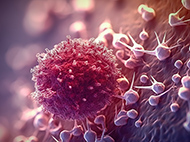
Genetic susceptibility to critical illness from acute infections
Genetic susceptibility to critical illness from acute infections is a group of inherited conditions affecting the immune system. This cohort is being established at Boston Children’s in 2024 and will be led by Drs. Janet Chou and Adrienne Randolph. Learn more about genetic immunodeficiency disorders causing susceptibility to critical illness from acute infections.
Investigators: Adrienne Randolph, MD, MSc, and Janet Chou, MD
Divisions: Immunology Program, Immunology, Critical Care Medicine, Anesthesiology, Critical Care and Pain Medicine, Infectious Diseases
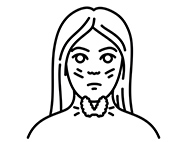
Graves Disease
Graves disease is an autoimmune disorder that can cause hyperthyroidism (overactive thyroid). Thyroid hormones affect many body systems, so signs and symptoms of Graves' disease can be wide ranging. This cohort, established at Boston Children’s in 2022, is led by Drs. Janet Chou and Jessica Smith and has already enrolled 6 patients and their families. To date, 11 percent of patients have received diagnostic results leading to a change in treatment plans. Learn more about Graves disease at Boston Children’s.
Investigators: Janet Chou, MD and Jessica Smith, MD
Divisions: Immunology Program, Immunology
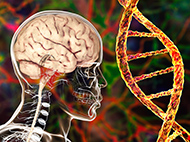
Hereditary Spastic Paraplegia
Hereditary spastic paraplegia (HSP) refers to a group of more than 80 genetic conditions that present with progressive spasticity (muscle tightness) and weakness. This cohort, established at Boston Children’s in 2022, is led by Drs. Darius Ebrahimi-Fakhari and Mustafa Sahin and has already enrolled 38 patients and their families. To date, 35 percent of patients received clinical results leading to changes in treatment plans and an additional 52 percent have candidate findings that are being further researched. Learn more about HSP at Boston Children’s.
Notable publication: Early-Onset and Severe Complex Hereditary Spastic Paraplegia Caused by De Novo Variants in SPAST
Investigators: Darius Ebrahimi-Fakhari, MD, PhD and Mustafa Sahin, MD, PhD
Divisions: Movement Disorders Program, Neurology
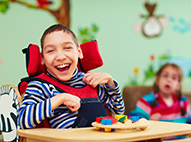
Hyperkinetic Disorders
Hyperkinetic disorders are characterized by abnormal movement with a rapid, involuntary nature. These excess movements can be sustained and patterned, as in dystonia; brief and random, as in chorea; regular and rhythmic, as in tremor; or jerk-like and arrhythmic, as in myoclonus. This cohort is being established at Boston Children’s in 2024 and will be led by Drs. de Gusmao and Alqahtani. Learn more about hyperkinetic disorders seen at Boston Children’s.
Investigators: Claudio Melo de Gusmao, MD and Xena Alqahtani, MD
Divisions: Movement Disorders Program, Neurology
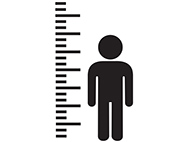
Idiopathic Short Stature
Patients with idiopathic short stature are older than the age of 3 and less than two standard deviations from the average height for their age (prior to starting growth hormone therapy). This cohort, established at Boston Children’s in 2019, is led by Drs. Joel Hirschhorn and Jia Zhu and has already enrolled 86 patients and their families. Ten percent of patients have received diagnostic results leading to changes in treatment plans and an additional 10 percent have candidate findings that are being further researched. Learn more about idiopathic short stature at Boston Children’s.
Investigators: Joel Hirschhorn, MD, PhD, and Jia Zhu, MD
Division: Endocrinology

Immunodeficiencies, Autoimmunity, and Immune Dysregulation
Immunodeficiencies, autoimmunity, and immune dysregulation are a group of inherited conditions affecting the immune system, due to a lack of or dysfunction of white blood cells, which have important roles in fighting infections. This cohort, established at Boston Children’s in 2019, is led by Drs. Janet Chou and Craig Platt and has enrolled more than 170 patients and their families. Key outcomes include diagnostic findings in 35 percent of patients, of which 35 percent resulted in changes in treatment plans, candidate findings in 57 percent of patients that are being further researched, and discoveries of six new genetic causes of primary immunodeficiency. Learn more about immunodeficiencies, autoimmunity, and immune dysregulation at Boston Children’s.
Notable publication: Rethinking immunologic risk: a retrospective cohort study of severe SARS-CoV-2 infections in individuals with congenital immunodeficiencies (accepted)
Investigators: Janet Chou, MD, and Craig Platt, MD, PhD
Divisions: Immunology Program, Immunology
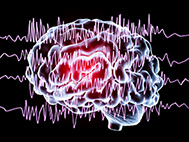
Infantile Epilepsy
Infantile epilepsy is a group of disorders that affect the brain. This cohort, established at Boston Children’s in 2021, is led by Drs. Annapurna Poduri and Alissa D’Gama and has enrolled more than 80 patients and their families. Key outcomes include diagnostic results for 46 percent of patients, of which 56 percent led to changes in treatment plans, and candidate findings in 27 percent that are being further researched. Learn more about epilepsies and seizures at Boston Children’s.
Notable publication: International multi-centre prospective cohort pilot study of rapid genome sequencing in infantile epilepsy: shifting the diagnostic paradigm
Investigators: Ann Poduri, MD, MPH and Alissa D’Gama, MD, PhD
Divisions: Epilepsy Genetics Program, Epilepsy Center, Neurogenetics, Neurology
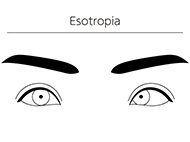
Infantile Esotropia
Infantile esotropia is a form of strabismus (misaligned eyes) where one or both eyes turn inwards towards the nose. It can result in loss of vision and depth perception. This cohort, established at Boston Children’s in 2022, is led by Dr. Mary Whitman and has already enrolled 18 patients and their families. To date, 67 percent of patients have had candidate findings that are being further researched. Learn more about infantile esotropia at Boston Children’s.
Investigator: Mary Whitman, MD, PhD,
Divisions: Pediatric Strabismus Service, Ophthalmology
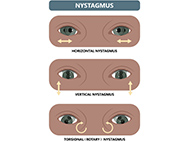
Infantile Nystagmus Syndrome
Infantile nystagmus syndrome is a condition in which the eyes make repetitive, uncontrolled movements. These movements often result in reduced vision and depth perception and can affect balance and coordination. Infantile nystagmus can be the first sign of a serious vision condition, such as congenital blindness. These involuntary eye movements can occur from side to side, up and down, or in a circular pattern. This cohort is being established at Boston Children’s in 2024 and will be led by Drs. Mary Whitman, Anne Fulton, and Pablo Altschwager Kreft. Learn more about infantile nystagmus at Boston Children’s.
Investigators: Mary Whitman, MD, PhD, Anne Fulton, MD, and Pablo Altschwager Kreft, MD
Division: Ophthalmology
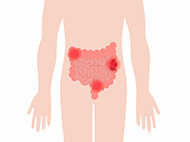
Inflammatory Bowel Disease
Inflammatory Bowel Disease (IBD) is a group of disorders that affect the intestinal tract. This cohort, established at Boston Children’s in 2018, is led by Dr. Scott Snapper and has already enrolled more than 750 patients and their families. Some key outcomes include 1 percent of patients with diagnostic findings returned and an additional 3 percent with findings that are being further researched, including novel candidate genes. Learn more about about IBD at Boston Children’s (Crohn's disease, ulcerative colitis, indeterminate colitis, very early onset inflammatory bowel disease).
Notable publication: Clinical Phenotypes and Outcomes in Monogenic Versus Nonmonogenic Very Early Onset Inflammatory Bowel Disease
Investigator: Scott Snapper, MD, PhD
Divisions: Inflammatory Bowel Disease Center, Gastroenterology, Hepatology and Nutrition
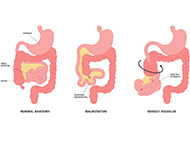
Intestinal Malrotation and Volvulus
Intestinal malrotation is a congenital process in which the intestines are not properly located in the abdomen during development. Intestinal malrotation can put a child at risk for serious complications including mid-gut volvulus, which occurs when the intestine twists on itself, cutting off its blood supply and potentially injuring the intestinal tissue due to lack of blood supply. Children with intestinal malrotation and volvulus often require surgery to remove parts of their intestine, which can result in short bowel syndrome. There are currently no known genetic causes for intestinal malrotation and mid-gut volvulus. This cohort, established at Boston Children’s in 2023, is led by Drs. Christopher Duggan, Wen-Hann Tan, Tom Jaksic, and Jonathan Salazar and has already enrolled 20 patients and their families. Learn more about intestinal malrotation and volvulus at Boston Children’s.
Investigators: Christopher Duggan, MD, MPH, Wen-Hann Tan, BMBS, Tom Jaksic, MD, PhD, and Jonathan Salazar, MD
Divisions: Center for Advanced Intestinal Rehabilitation (CAIR), Gastroenterology, Hepatology and Nutrition, Genetics and Genomics, Surgery, Nutrition Center

Interstitial Cystitis
Interstitial Cystitis is a chronic condition causing bladder pressure, bladder pain and sometimes pelvic pain. This cohort, which was established at Boston Children's Hospital in 2000, is led by Dr. Catherine Brownstein and has enrolled almost 500 patients and their families. Notably, Dr. Brownstein recently published “Mendelian Disorders in an Interstitial Cystitis/Bladder Pain Syndrome Cohort”. Learn more about Interstitial Cystitis at Boston Children's.
Investigator: Catherine Brownstein, MPH, PhD
Divisions: Genetics and Genomics, Urology
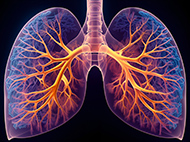
Interstitial and Diffuse Lung Disease
Interstitial and diffuse lung disease (ILD) is a group of rare lung diseases that range from mild to severe and can make it difficult to breathe. The diseases can interfere with the exchange of oxygen and carbon dioxide and can cause fluid and other materials to collect in the lungs. This cohort, established at Boston Children’s in 2019, is led by Drs. Benjamin Raby, Martha Fishman and Alicia Casey and has enrolled more than 200 patients and their families. Key outcomes include changes in treatment plans for 5 percent of patients, discoveries of new treatment modalities, and candidate findings in 31 percent of patients that are being researched further. Learn more about ILD at Boston Children’s.
Investigators: Benjamin Raby, MD, MPH, Martha Fishman, MD, and Alicia Casey, MD
Divisions: Pulmonary Genetics Program, Pulmonary Medicine
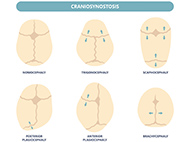
Isolated Craniosynostosis
Isolated craniosynostosis is a condition in which the fibrous connections between the bones of the skull, called sutures, fuse together too early during a child’s development. This cohort is being established at Boston Children’s in 2024 and will be led by Drs. Daniel Balkin, Gabrielle Lemire, and Anne O'Donnell-Luria. Learn more about craniosynostosis at Boston Children's.
Investigators: Daniel Balkin, MD, PhD, Gabrielle Lemire, MD, and Anne O'Donnell-Luria, MD, PhD
Divisions: Plastic and Oral Surgery, The Manton Center for Orphan Disease Research, Genetics and Genomics, Cleft and Craniofacial Center, Craniofacial Program
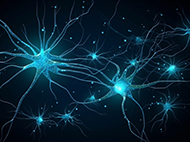
KCNQ2-related Epilepsies
KCNQ2-related disorders encompass a range of neonatal epileptic conditions that can vary in severity. This cohort is being established at Boston Children’s in 2024 and will be led by Drs. Annapurna Poduri and Heather Olson. Learn more about epilepsies and seizures at Boston Children’s.
Investigators: Ann Poduri, MD, MPH and Heather Olson, MD
Divisions: Epilepsy Genetics Program, Epilepsy Center, Neurogenetics, Neurology
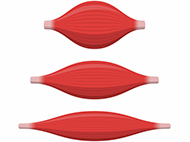
Myopathies and Dystrophies
Myopathies and dystrophies are a group of disorders that affect the muscle. Most children with myopathies and dystrophies have muscle weakness and lack of muscle tone that complicates basic activities like swallowing and breathing. This cohort, established at Boston Children’s in 2019, is led by Dr. Alan Beggs and has enrolled more than 250 patients and their families. To date, 31 percent of patients have received a clinical diagnosis and an additional 6 percent had a candidate gene identified that is being further researched. Learn more about myopathies and dystrophies at Boston Children’s.
Notable publication: Whole exome sequencing of a large cohort of patients with a clinicopathologic diagnosis of congenital myopathy leads to a broad spectrum of genetic diagnoses (submitted)
Investigator: Alan Beggs, PhD
Divisions: Neuromuscular Center, Genetics and Genomics, Neurology, The Manton Center for Orphan Disease Research
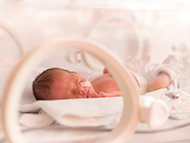
Neonatal Intensive Care Unit (NICU)
The Neonatal Intensive Care Unit (NICU) at Boston Children’s is a Level III/IV, 30-bed referral center for critically ill infants requiring complex medical and surgical care. Highly specialized physicians, nurses, and support staff collaborate in the care of critically ill infants and their families. This cohort, established in 2021, is led by Dr. Sarah Morton and has enrolled 7 patients and their families. To date, 14 have had candidate findings that are being researched further. Learn more about Boston Children’s NICU.
Notable publication: Multicenter Consensus Approach to Evaluation of Neonatal Hypotonia in the Genomic Era: A Review.
Investigator: Sarah Morton, MD, PhD
Divisions: NICU, Maternal Fetal Care Center, Newborn Medicine
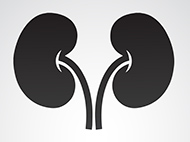
Nephrotic Syndrome / Glomerular Disease
Nephrotic syndrome / glomerular disease is a group of disorders that affect the kidney and cause the body to pass too much protein in the urine. This cohort, established at Boston Children’s in 2021, is led by Dr. Matthew Sampson and has enrolled 42 patients and their families. To date, 3 percent of patients have diagnostic results and an additional 2 percent have candidate findings that are being further researched. Learn more about nephrotic syndrome at Boston Children’s. Get involved.
Investigator: Matthew Sampson, MD, MS
Divisions: Kidney Genetics Clinic, Nephrology
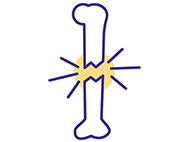
Osteogenesis Imperfecta
Osteogenesis imperfecta (OI), also known as brittle-bone disease, is a genetic and inherited disorder characterized by fragile bones that break easily without a specific cause. OI is caused by a genetic defect affecting the non-mineral part of bone. However, many patients with multiple (three or more) fractures don’t have a genetic diagnosis. This cohort, established at Boston Children’s in 2021, is led by Dr. Christina Jacobsen and aims to better understand why children fracture repeatedly. More than 30 patients and their families have enrolled. Key outcomes include new findings of OI in patients who were previously undiagnosed and candidate findings in 20 percent of patients that are being further researched. Learn more about OI at Boston Children's.
Investigator: Christina Jacobsen, MD, PhD
Divisions: Bone Health Program, Orthopedic Center, Endocrinology
NORD Report
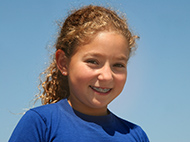
Precocious Puberty
Precocious puberty is a group of disorders that affect hormones and cause children to develop early sexual characteristics; in girls, this means before age 8, and in boys, before age 9. This cohort, established at Boston Children’s in 2022, is led by Dr. Stephanie Roberts and has already enrolled 26 patients and their families. To date, 9 percent of patients have received diagnostic results leading to changes in treatment plans and an additional 23 percent have candidate findings that are being further researched. Learn more about precocious puberty.
Notable publication: Novel MKRN3 Missense Mutations Associated With Central Precocious Puberty Reveal Distinct Effects on Ubiquitination.
Investigator: Stephanie Roberts, MD
Division: Endocrinology
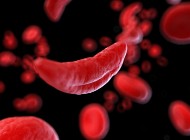
Sickle Cell Disease
Sickle Cell Disease is a group of inherited red blood cell disorders that affect how oxygen is carried through the body. This cohort, which was established at Boston Children's Hospital in 2019, is led by Drs. Carlo Brugnara and Vijay Sankaran and has enrolled over 800 patients and their families. Learn more about Sickle Cell Disease at Boston Children's.
Investigators: Carlo Brugnara, MD and Vijay Sankaran MD, PhD
Divisions: Cancer and Blood Disorders Center, Hematology and Oncology

Social and Cognitive Functioning Disorders (e.g., ADHD, OCD, dyslexia)
Social and cognitive functioning disorders (e.g., ADHD, OCD, dyslexia) are a group of neurodevelopmental disorders caused by differences in the development and function of the nervous system. This cohort, established at Boston Children’s in 2019, is led by Dr. Ryan Doan and has enrolled more than 100 patients and their families. Key outcomes include diagnostic findings in 18 percent of patients and candidate findings in 13 percent that are being further researched. Learn more about ADHD, OCD, and dyslexia at Boston Children’s.
Notable publication: Rare De Novo and Inherited Gene Discovery in Familial and NonFamilial Pediatric Attention-Deficit/Hyperactivity Disorder (submitted)
Investigator: Ryan Doan, PhD
Divisions: Developmental Medicine Center, Division of Developmental Medicine, Cardiac Neurodevelopmental Program, Genetics and Genomics, Neurology, Psychiatry and Behavioral Sciences
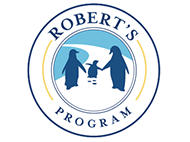
Sudden Unexpected Death in Pediatrics
Sudden unexpected death in pediatrics (SUDP) encompasses sudden infant death syndrome (SIDS) and sudden unexpected death in childhood (SUDC). SIDS is the sudden death of an infant under 1 year of age that cannot be explained after a thorough case investigation that includes an autopsy, a death scene investigation, and a review of the clinical history. This cohort is being established at Boston Chidren’s in 2023 by Drs. Richard Goldstein and Ingrid Holm. A recent study they led focusing on SIDS found that 6 percent of patients had a diagnostic result identified and an additional 19 percent had candidate findings identified that are being further researched. Learn more about SIDS and SUDP at Boston Children’s.
Notable publication: Genetic Determinants of Sudden Unexpected Death in Pediatrics
Investigators: Richard Goldstein, MD and Ingrid Holm MD, MPH
Division: Roberts Program
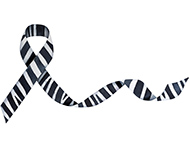
Ultra-Rare Syndromic Genetic Diseases
Ultra-rare syndromic genetic diseases are disorders that affect fewer than 200,000 people in the United States at any given time. They include genetic syndromes, immune system problems, errors of metabolism, neuromuscular disorders, and other little-noticed but scientifically important disease processes. This cohort, established at Boston Children’s in 2019, is led by Dr. Alan Beggs and has enrolled more than 150 patients and their families. Key outcomes include clinical diagnoses in 16 percent of patients, of which 8 percent led to changes in management. An additional 13 percent of patients had a candidate finding that is being investigated further. Learn more about ultra-rare syndromic genetic diseases at Boston Children’s.
Notable publication: A data-driven architecture using natural language processing to improve phenotyping efficiency and accelerate genetic diagnoses of rare disorders.
Investigator: Alan Beggs, PhD
Divisions: The Manton Center for Orphan Disease Research, Genetics and Genomics
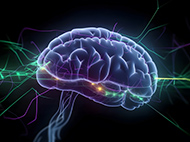
Unexplained Epilepsies
Unexplained epilepsies are a group of conditions that make a child susceptible to seizures but do not have a known cause. Unexplained epilepsies affect about 0.5 percent of children. This cohort, established at Boston Children’s in 2018, is led by Dr. Annapurna Poduri and has enrolled more than 750 patients and their families. Key outcomes include discoveries of clinically diagnostic variants in 19 percent of patients, of whom 41 percent of which had documented changes in treatment plans, prognosis or surveillance; and candidate genes in 18 percent that require further study. Learn more about Epilepsies and Seizures at Boston Children’s.
Notable publication: Exome Sequencing in a Broad Spectrum of Unexplained Pediatric Epilepsy Leads to Diagnosis and Clinical Utility.
Investigator: Annapurna Poduri, MD, MPH
Divisions: Epilepsy Genetics Program, Epilepsy Center, Neurogenetics, Neurology
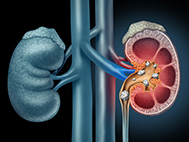
Urinary Tract Stone Disease
Urinary tract stones (kidney stones) are small, hard deposits of mineral and acid salts formed within the urinary tract that can obstruct the drainage of urine and may cause intense pain. This cohort, established at Boston Children’s in 2021, is led by Dr. Amar Majmundar and has enrolled 11 patients and their families. To date, 17 percent of patients have diagnostic results leading to change in treatment plans and an additional 33 percent have candidate findings that are being further researched. Learn more about urinary tract stone disease at Boston Children’s and on Dr. Majmundar’s lab website.
Investigator: Amar Majmundar, MD, PhD
Divisions: Kidney Genetics Clinic, Kidney Stone Program, Nephrology, Urology
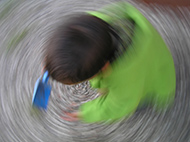
Vestibular Disorders
Vestibular disorders affect the sensory organs in the inner ear that detect head movements. A child's ability to balance is controlled by their vestibular function, as well as their vision and sensation of the joints and muscles (proprioception). This cohort, established at Boston Children’s in 2021, is led by Drs. Eliot Shearer and Jacob Brodsky and has enrolled 48 patients and their families. To date, 4 percent of patients received diagnostic results that led to changes in treatment plans, and additional candidate findings in 8 percent of patients are being further researched. Learn more about vestibular disorders at Boston Children’s.
Notable publication: Peripheral Vestibular Dysfunction Is a Common Occurrence in Children With Non-syndromic and Syndromic Genetic Hearing Loss.
Investigators: A. Eliot Shearer, MD, PhD and Jacob Brodsky, MD, FACS, FAAP
Divisions: Balance and Vestibular Program, Deaf and Hard of Hearing Program, Center for Communication Enhancement, Otolaryngology and Communication Enhancement
